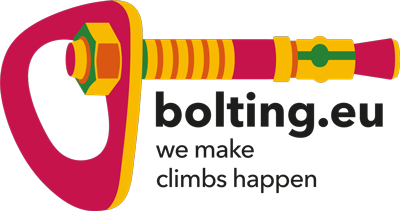Climbing area quality criteria
Climbing area quality criteria
Bolting.eu implements its 10-point climbing area quality criteria when building or rebuilding climbing areas.
The following goals are achieved with these criteria:
- Maximum possible safety for visitors to the climbing area
- maximum functionality (also for small people and children) for positively charged emotions and experiences
- High feel-good factor for a high revisit rate
- Extreme durability
- Sustainable profitability (high return on investment)
- Avoidance of climbing area maintenance through professional execution
What visitors to the climbing area perceive
At bolting.eu, we see a climbing area as an experience that is filled with many emotions. And of course these feelings should be as positive as possible for the climber. And this is guaranteed by our 10 climbing area quality criteria.
Firstly, climbing area visitors always want to feel safe. Secondly, they want a sense of achievement. And thirdly, they want the infrastructure to be highly functional. Climbers are very mobile and can tell whether a climbing area has been set up by professionals.
Anyone who has ever been in a poorly drilled climbing area is certainly familiar with the following situations:
- Entrances with large camber potential
- a frustrated climbing partner standing on a large ledge but unable to clip in the next belay point because it is set far too high
- glue in bolt that protrude far too far from the rock
- expansion bolt where there is a cross-loading of the carabiner on the side of the bolt
- Poor route guidance with unpleasant, high rope friction
- lower off where it completely rubs off the climbing rope on sharp edges
- the fear when heavily rusting securing points appear
10 climbing area quality criteria
- we only use standardized materials from steel quality A4 or AISI 316
- Perfectly set up routes:
– Condensed hook spacing near the ground and after each step
– Beginner-friendly hook spacing on easy routes
– “5-point check” at every belay point
– Best possible rope routing for minimal rope friction
– Ideally positioned lower off for maximum rope protection - Cleaning the upper edge of the rock
- Removal of all loose rock
- Testing the rock quality through representative pull-out tests
- Suitable route labeling
- High-quality information board with natural materials (frame)
- Clearly prepared access routes and clear signposting
- Framework infrastructure: toilets, garbage cans, rest areas and play facilities for families
- Comprehensive documentation of the construction & materials used as well as information about the duties of the climbing garden owner;
